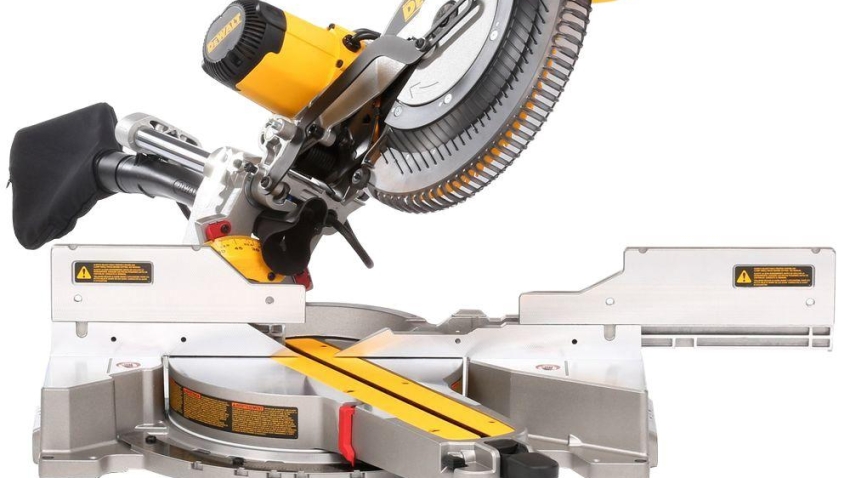
Single vs Double Bevel Miter Saws: Making the Right Choice
Introduction to Miter Saws
Miter saws are essential for precision cutting in various materials. They’re typically used for woodworking, but they’re also capable of slicing through metal, plastic, and other substances. Primarily, miter saws execute crosscuts, which cut across the wood grain. They are also used for trimming, creating moldings, and working on projects that require accurate angle cuts. The tool operates with a mounted circular blade that lowers onto the workpiece to produce the cut.
What Miter Saws Are and Their Uses
At its core, a miter saw is a specialized tool that allows for precise cutting of angles. The word ‘miter’ refers to the saw’s ability to cut angles other than 90 degrees, which is ideal for creating corners like those found in picture frames or door frames. Additionally, these saws make quick work of straight cuts for general woodworking tasks. Miter saws are versatile, able to handle cuts in materials such as wood, plastic, and metals when equipped with the appropriate blades. Their use extends to many projects, such as framing, home improvement, and finish carpentry.
Core Differences Between Single and Double Bevel Miter Saws
Understanding the core differences between single and double bevel miter saws is critical. Both types share the fundamental function of making precise cuts. Yet, they differ in terms of blade tilting capabilities. This feature plays an essential role in the saw’s application and efficiency.
The Beveling Capabilities Explained
Single bevel miter saws can tilt their blade in one direction only. To make opposite angle bevel cuts, you must flip the workpiece. It adds steps and can affect precision in repetitive tasks. Double bevel miter saws, however, can tilt their blade both ways. This allows making matching bevel cuts without moving the workpiece. It saves time and boosts accuracy when making numerous similar cuts.
Advantages of Single Bevel Miter Saws
When evaluating miter saws, it is essential to consider the advantages of a single bevel miter saw. This type of saw is typically more cost-effective than its double bevel counterpart, making it an attractive option for those on a tighter budget or who do not require the additional features of a double bevel saw. Single bevel miter saws can execute most of the necessary cuts for a variety of projects, but with a simpler mechanism. This can be particularly appealing for beginners or hobbyists.
Cost-Effectiveness and User-Friendly Nature
Single bevel miter saws are known for their affordability. They are less costly than double bevel saws, often by a significant margin. Therefore, they present a good value proposition for individuals seeking a functional miter saw without a high initial investment.
Additionally, the user-friendly nature of single bevel miter saws makes them suitable for individuals new to woodworking. Their straightforward design fosters ease of use, which can help to reduce the learning curve for novice users. The single bevel’s ability to make accurate cuts, coupled with an uncomplicated setup, translates into a less daunting experience for first-timers and enhances the sense of mastery over their tool.
Single vs double bevel miter saw users find that the former require less complexity in terms of operation. The necessity to manually flip the workpiece for opposite bevel cuts may seem like a drawback. However, it encourages a deeper understanding of the cutting process and can actually enhance precision skills over time.

When to Use a Single Bevel Miter Saw
When considering which miter saw to buy, think about the projects you’ll tackle. A single bevel miter saw is often sufficient for many tasks, not requiring the added complexity or cost of a double bevel saw. This section explores the scenarios where a single bevel miter saw is your best bet.
Appropriate Projects and Considerations
A single bevel miter saw is the go-to for standard cuts and basic angle requirements. For typical tasks like straight crosscuts and simple miter cuts, it does the job well. If your projects involve creating frames, trimming, or crafting simple furniture, a single bevel saw meets these needs cost-effectively.
Keep in mind, single bevel miter saws lean only one way. They cut angles in just one direction. You turn your workpiece for opposite cuts. This means added steps but also can aid in grasping cutting techniques.
For beginners or those sticking to straightforward projects, single bevel saws present a practical pick. They’re less expensive, easier to handle, and lighter to move. Plus, they’re great when you’re learning and mastering basic woodworking skills.
On the other hand, consider project volume and complexity. If you seldom need bevel cuts or you’re working on simple DIY tasks, single vs double bevel miter saw choices lean towards single. This saw saves money without sacrificing the essentials needed for your work.
Lastly, ponder the space you’re working in. Single bevel saws, being generally smaller, fit better in limited spaces. They’re ideal for home workshops where storage and workspace may be at a premium.
Before you decide, review your project list and weigh the pros against your budget. If your aim is good quality basic cuts without fancy features, a single bevel miter saw stands out. It offers solid performance for most woodworking endeavors without the higher price tag of a double bevel saw.

Benefits of Using Double Bevel Miter Saws
Double bevel miter saws offer a step up in versatility and efficiency. These tools tilt the blade in both directions. This dual-tilting action allows for quick and precise bevel cuts on both sides of a workpiece. You don’t need to flip the material. That saves you time and reduces the chance for errors. For projects with many identical cuts, a double bevel saw is efficient. It increases the speed of your work. And it ensures a consistent quality in every cut.
Enhanced Versatility and Efficiency in Projects
Double bevel miter saws boost versatility and efficiency in your projects. With their two-way tilt, complex cuts are simpler. Think crown molding or custom frames. These tasks demand precise angles on both sides of the material. A double bevel saw does this without flipping the workpiece. It’s a clear choice for professionals and serious hobbyists. They can take on advanced projects and meet tight deadlines. Overall, if detailed cuts are frequent in your work, a double bevel miter saw might be your best tool.
Choosing a Double Bevel Miter Saw
For advanced woodworking, a double bevel miter saw is a top choice. It offers more flexibility than a single bevel saw. It allows bevel cuts on both sides without flipping the workpiece.
Projects That Demand a Double Bevel Miter Saw
Certain projects call for the unique capabilities of a double bevel miter saw. Here’s when to choose one:
- Crown Molding: Cutting angles on both sides of the molding is essential. A double bevel saw makes this seamless.
- Custom Frames: Creating frames with perfect corner joints requires precise beveling on both ends.
- Cabinetry: Cabinet making often needs symmetrical bevel cuts. This saw offers precision and saves time.
- Complex Trim Work: If your trim has intricate designs, a double bevel saw delivers accurate cuts.
- Large-scale Projects: For jobs with many cuts, save time with a saw that doesn’t need flipping.
A double bevel miter saw ensures accuracy and speed for these projects. It’s ideal for professionals and serious DIYers tackling complex tasks.

Practical Considerations for Buying a Miter Saw
When you are in the market for a miter saw, it’s vital to take stock of what you truly need from your tool before making the purchase. Both single vs double bevel miter saw options have distinct advantages, but they also speak to specific user requirements and project types. Here we’ll delve into some key considerations you should ponder to ensure you make an educated decision that aligns with both your needs and budget.
Assessing Your Needs and Budget
When determining which miter saw to buy, start by evaluating the types of projects you’ll undertake. If your work involves complex bevel cuts or you value efficiency for high-volume tasks, a double bevel miter saw could greatly benefit your workflow. On the other hand, if your projects are straightforward with occasional bevel cuts, a single bevel miter saw should suffice.
Consider the price difference between single and double bevel models. Dual bevel saws typically cost more due to their advanced features. Decide if these features are worth the investment for the work you do.
Also, reflect on the size and portability of the saw. If you have limited space or need to move the saw around frequently, the generally lighter single bevel saw might be more convenient for you. Moreover, think about the future. Your current needs may expand and opting for a model that grows with your skills could be a wise choice.
Your budget plays a pivotal role as well. Balance the cost against the value the tool brings to your projects. It might be tempting to opt for a saw with all the bells and whistles, but if those features won’t be used, it’s an unnecessary expenditure.
In summary, choosing the right miter saw hinges on a clear understanding of your project demands, budget constraints, and consideration for future growth. Weigh these factors carefully to select a saw that not only fits your current needs but also offers room for the evolution of your craftsmanship.
Conclusion: Determining the Best Miter Saw for Your Workshop
Choosing the right miter saw is crucial. Your choice affects the quality and efficiency of your work. Consider the points discussed to make an informed decision.
Summarizing the Pros and Cons
Single bevel miter saws are less expensive and easier to use. They’re suitable for basic tasks and ideal for beginners. On the other hand, double bevel miter saws offer more flexibility. They make complex tasks quicker and cuts more precise.
Pros of Single Bevel Miter Saws:
- Cost less, thus saving you money.
- Simple to operate, good for learners.
- Ideal for basic straight and miter cuts.
Cons of Single Bevel Miter Saws:
- Limited in making bevel cuts.
- Must flip the workpiece for opposite cuts.
- Not efficient for complex projects.
Pros of Double Bevel Miter Saws:
- Can tilt in both directions for quick bevel cuts.
- No need to flip the workpiece, more accurate.
- Saves time on projects with many identical cuts.
Cons of Double Bevel Miter Saws:
- Costs more than single bevel saws.
- May be more complex to use for beginners.
In short, single vs double bevel miter saws serve different needs. Evaluate your projects and choose a saw that aligns with your tasks. Beginners or those with simple projects may lean towards single bevel. Professionals or frequent DIYers with complex projects might prefer double bevel saws. Balance your needs with your budget to find the perfect fit for your workshop.




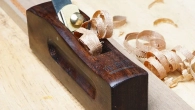
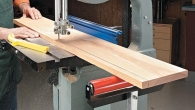
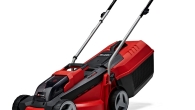


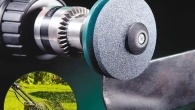
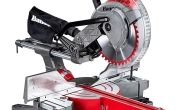

Leave a Reply